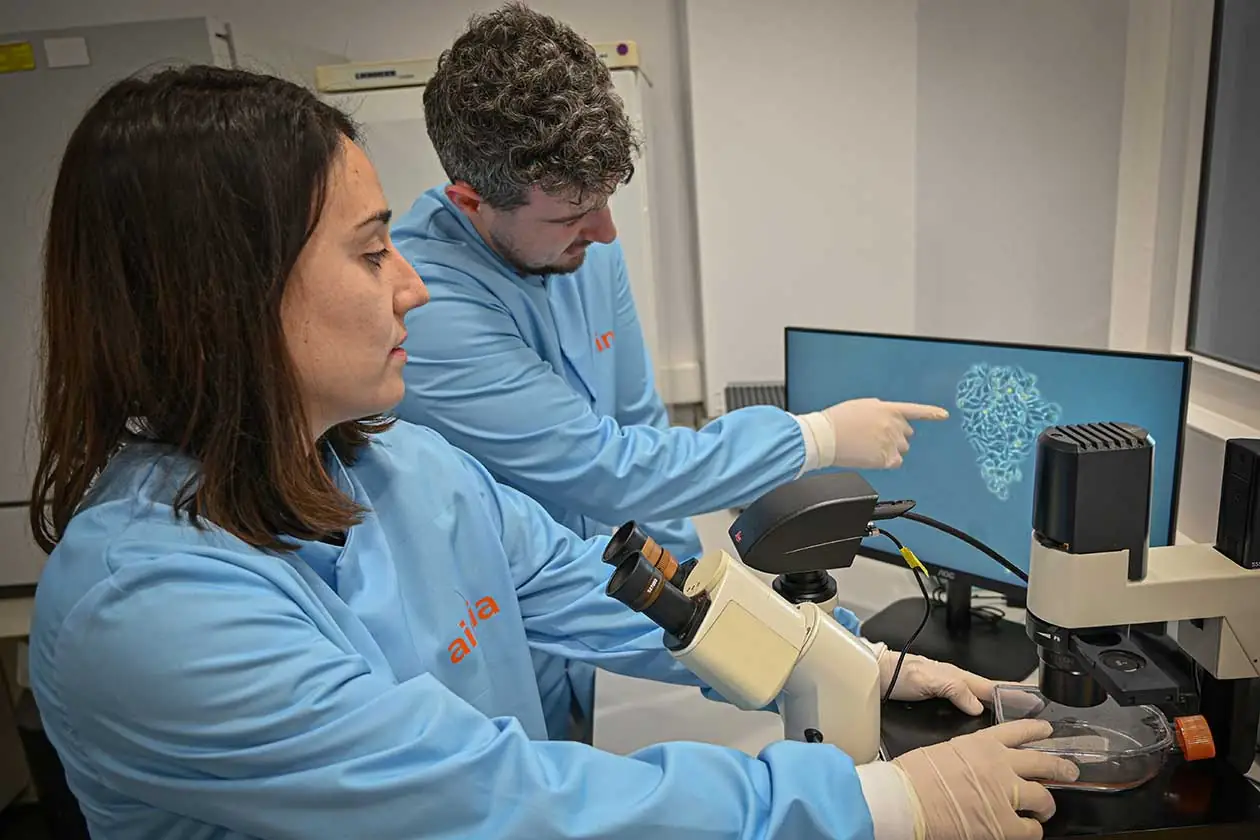The cosmetics industry requires ingredients that can be produced in sufficient quantities and yields to make the process technically and economically viable. Therefore, the industry is investigating different ingredients that can be scaled up to an industrial level, one of which is extracellular vesicles. After two years of research, we discuss the challenges and future prospects of this compound as a functional ingredient in the cosmetics industry.
Extracellular Vesicles in Cosmetics: Current Status, Challenges, and Future Perspectives
In previous instances, we have discussed the various challenges and advancements surrounding the field of extracellular vesicles (EVs) in different industrial sectors (spanish), from functional food to cosmetics, mentioning, of course, the pharmaceutical sector.
Due to its great potential as a functional ingredient, AINIA has worked for over two years on two IVACE-FEDER projects (FIVEX I and FIVEX 2), aiming to design methodologies for obtaining extracellular vesicles (spanish), analyzing their potential functionality, and exploring their suitability and scalability to industrial processes.
Currently, there are various sources for obtaining EVs, as well as methodologies for their extraction. However, not all purification methods allow for scaling up to an industrial level, greatly hindering their implementation as a functional ingredient. This limits their use to applications requiring small quantities or within the context of basic or clinical research.
Development of a Scalable Isolation Methodology
In this regard, one of the main outcomes of the FIVEX projects was the development of a scalable isolation methodology based on anion exchange chromatography. This methodology can be adapted to different sources of extraction, such as probiotic organisms, cells, plant extracts, and mammalian cells.
Furthermore, it was validated that the obtained EVs had functional effects by testing their impact on in vitro culture systems. Various effects were observed, including immunomodulatory, antioxidant, and even whitening effects on induced melanocytes (Results published in the International Society for Extracellular Vesicles (ISEV) 2021 and 2022 congresses).
- International Congress – ISEV2021: Advances in the Use of Extracellular Vesicles as a Functional Ingredient (spanish)
- International Congress – ISEV2022: Why Does Research on Extracellular Vesicles Continue to Grow? (spanish)
Given these in vitro tested effects, it is logical to consider that EVs would be an extremely interesting ingredient in the cosmetics sector. The lipid nature of EVs would make them easily absorbable by the skin, potentially generating effects even in deeper layers. However, despite the diverse and promising functional effects, adapting them for implementation as an ingredient in different formulations continues to be a challenge for biotechnology and, specifically, for the cosmetics industry, where only a handful of formulations indicate the presence of EVs on their labeling.
Therefore, within the framework of the FIVEX 2 project, AINIA also focused on exploring different preservation processes to ensure their integrity over time, as well as their functional effect. It was observed that processes based on lyophilization more effectively maintain the integrity of EVs.
Optimization of a Mammalian Cell Production System for Large Volumes
Another challenge addressed in the FIVEX 2 project was the optimization of a mammalian cell production system for large volumes. In this regard, the industry requires ingredients that can be produced in batches, in reasonable quantities and yields, to make the process technically and economically viable.
Within the framework of the FIVEX 2 project, progress has been made in the cultivation of adherent hepatic cells in a bioreactor to increase the total volume of cells and, consequently, the volume of EVs produced by them. This optimizes the sources of extraction, streamlining the cultivation processes and generation of EVs of interest. Furthermore, it has been evaluated that EVs obtained under such conditions did not lose their immunomodulatory functionality compared to those obtained in conventional in vitro systems.
Similarly, for EVs obtained from probiotic microorganisms, studies have been conducted to determine which factors and random variables during microorganism growth influenced EV biogenesis, as research on EVs in probiotic microorganisms remains limited. In this regard, it was observed that certain variables influence the total number of EVs, but more significantly, they influence the type of EVs produced, thereby optimizing a microorganism growth process to enhance EV biogenesis.
In summary, after these two years of research, numerous alternatives and processes have been explored to bring the use of EVs closer to the cosmetics industry, providing resources and solutions that can lay the groundwork for the use of EVs as a functional ingredient in the industry. If you are interested in learning more, please contact us.




